- Drug Topics November/December 2025
- Volume 169
- Issue 6
Conference: National Community Pharmacists Association 2025 Annual Convention & Expo
Key Takeaways
- Continuous pneumococcal vaccine development is driven by the evolving epidemiology of Streptococcus pneumoniae, necessitating reassessment of vaccine recommendations to cover prevalent serotypes.
- Next-generation vaccines like PCV20 and PCV21 aim to maximize serotype coverage, with PCV21 covering 84% of current US serotypes.
Key sessions from the National Community Pharmacists Association 2025 Annual Convention & Expo highlight pharmacy benefit manager reform, pneumococcal vaccines, and billable services.
Pneumococcal Diseases Require Constant Vaccine Development
The constant development of pneumococcal vaccines is primarily necessitated by the shifting epidemiology of the Streptococcus pneumoniae bacteria. As the pathogen evolves, new serotypes—or specific strains—that are not covered by existing vaccines emerge and become the dominant cause of disease. This continuous evolution means that the protection provided by any given vaccine will eventually wane as the circulating strains change, according to a presentation at the National Community Pharmacists Association (NCPA) 2025 Annual Convention & Expo. For clinicians, this mandates a perpetual reassessment of current recommendations to ensure that the vaccines being administered cover the serotypes most prevalent in the patient population at that time.
Historically, the vaccine landscape has seen a constant push for broader and more effective coverage. Protection against pneumococcal disease was initially provided by pneumococcal polysaccharide vaccines (PPSVs), such as PPSV23, but these proved ineffective for young children because they failed to generate a lasting immune memory. The revolutionary shift came with the approval of pneumococcal conjugate vaccines (PCVs), starting with PCV7 in the year 2000. While PCV7 was initially effective, the subsequent serotype shift by 2005 necessitated the development of PCV13 to cover an expanded range of strains, establishing a clear pattern of vaccine-induced pressure driving the evolution of the bacteria and, in turn, driving further vaccine innovation.
This trend continues today with the availability of next-generation vaccines, such as PCV20 (Prevnar 20) and PCV21 (Capvaxive). The focus for these newer vaccines is maximizing the percentage of current disease-causing serotypes they can cover. The article highlights that PCV21, for example, is found to cover 84% of currently circulating serotypes in the US, significantly outperforming PCV20’s 52% coverage. Because vaccine recommendations—which are dependent on a patient’s age, health history, and current risk—must follow the bacteria’s evolution, manufacturers and pharmacists must constantly update their knowledge and approach. The ongoing nature of the serotype shift suggests that this cycle of development and reevaluation will persist into the foreseeable future.
“The question should be, ‘Are we covering the right serotypes that we're seeing currently?’ That’s what, as clinicians, we need to think about and do the research, create the package inserts, [and] see if the right serotypes are being covered,” Jeannie Grubbs, PharmD, manager at Publix Pharmacy, said in the presentation. “Because of this, we’re seeing Prevnar 20 having about 52% coverage of the current cases we’re seeing, where Capvaxive is going to be covering 84% of the serotype coverage that we’re seeing here in the US.”
Uncovering New PBM Mechanisms Amid State Rebate Reform
State-level pharmacy benefit manager (PBM) reform, exemplified by Utah’s pass-through rebate law (House Bill 0257), is beginning to show how PBMs adapt and create new entities to circumvent legislation intended to control drug costs. The Utah law requires that rebates on prescription drugs be passed directly to the insurance beneficiary, instead of PBMs retaining them as profit. However, as experts, including Dae Lee, PharmD, Esq, CPBS; and Lucas Morgan, Esq, both shareholders with Buchanan Ingersoll & Rooney, discussed at the NCPA 2025 Annual Convention & Expo, PBMs are increasingly utilizing new tactics and previously obscure entities to evade the spirit of these reform efforts at the state level.
A major tactic that is becoming uncovered is the use of “rebate aggregators.” According to the experts, these aggregators function outside the legal definition of a PBM, allowing them to retain rebates and manufacturer fees that are supposed to be passed through to the consumer under the new laws. By leveraging these separate entities, the “Big 3” PBMs can continue opaque operations and profit from drug costs without technically violating the new pass-through laws. This dynamic creates a constant regulatory challenge where legislative reform is met with immediate counterstrategies from the PBM industry.
The insights shared at the NCPA 2025 Annual Convention & Expo emphasize that the fight for transparency and lower drug costs is ongoing, with PBM tactics being uncovered on a rolling basis. While state laws like Utah’s are a significant first step, they reveal that PBMs are highly skilled at evading reform through complex, newly highlighted entities like rebate aggregators. The ongoing discussion surrounding state-level PBM reform suggests that these discoveries may eventually influence the sentiment and direction of PBM reform efforts on the federal level, continuing the push for greater accountability in the drug supply chain.
“Rebate aggregators are not PBMs,” Lee said. “Whatever the rebates that are being retained by those rebate aggregators, and the fees paid by the manufacturers to the rebate aggregators, off of the wholesale acquisition costs or [rebated] cost, are not being passed through.”
Establishing Billable Clinical Services Improves Financial Sustainability
As pharmacists increasingly take on a greater role in providing clinical services, it has become crucial for community pharmacies to proactively establish and manage reimbursement pathways to ensure financial stability. The health care community is recognizing the value pharmacists bring to patient care, but turning that value into a sustainable business model requires diligence. Jennifer Griffin, PharmD, MS, clinical pharmacist at Harps Food Stores, Inc, explained at the NCPA 2025 Annual Convention & Expo that the biggest question pharmacies face is, “What can I actually bill for?” The answer, unfortunately, is highly dependent on state-specific guidelines.
Because reimbursement opportunities and hurdles vary from state to state, community pharmacies must conduct their own due diligence to identify potential new revenue streams. Griffin stressed the importance of pharmacies asking themselves the right questions regarding the services they wish to provide to their patients. This strategic self-assessment is key to developing simple yet beneficial approaches to integrating new clinical services into their everyday practice.
To successfully expand services and generate consistent revenue, pharmacies must become familiar with medical billing lingo and implement effective revenue cycle strategies. The goal is to successfully transition the pharmacy business model away from one that relies solely on dispensing fees toward one that incorporates professional service fees. By taking these proactive steps to establish billable clinical services, pharmacy groups like Harps Food Stores, Inc, have demonstrated the ability to transform their financial sustainability amid a challenging business environment.
“A big question that I get is, ‘What can I actually bill for?’” Griffin said. “That’s going to vary state to state. People from multiple different states ask, ‘Well, what can I bill for?’ You’re going to have to refer them.”
Articles in this issue
Newsletter
Pharmacy practice is always changing. Stay ahead of the curve with the Drug Topics newsletter and get the latest drug information, industry trends, and patient care tips.













































































































































